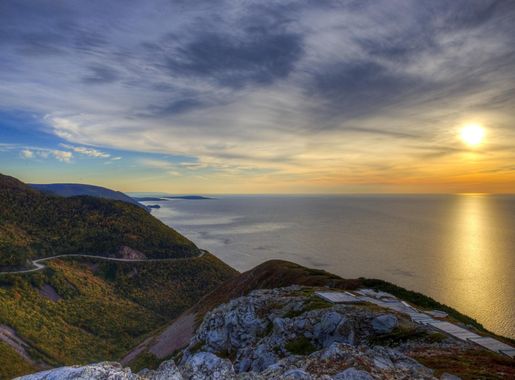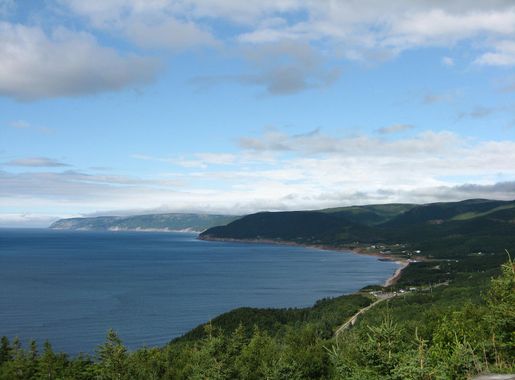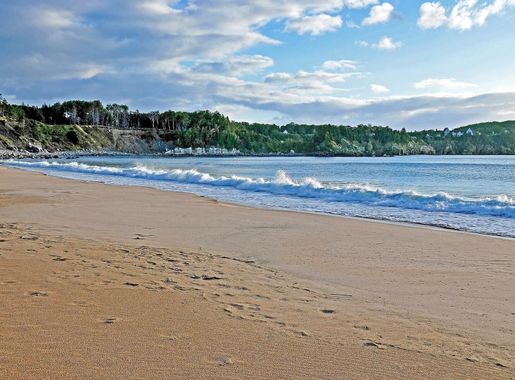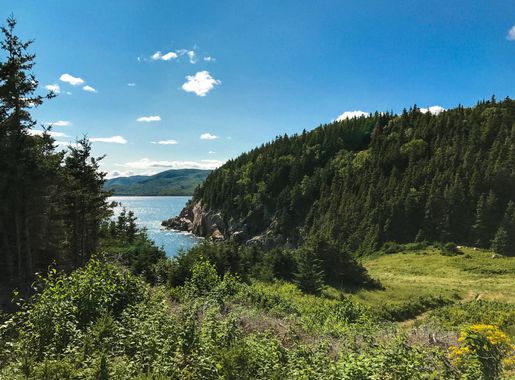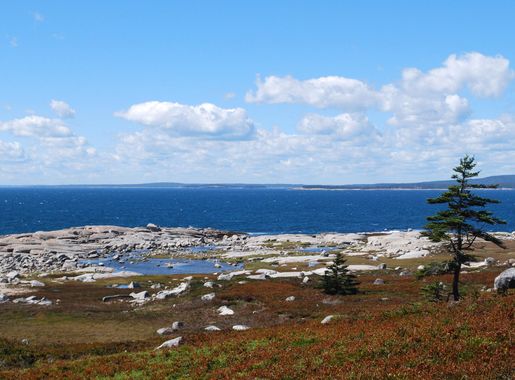
Cape Breton Highlands National Park: A Scenic Haven in Canada
Explore the majestic landscapes, abundant wildlife, and scenic trails of Cape Breton Highlands National Park in Nova Scotia, Canada.
Cape Breton Highlands National Park, located in the northern part of Cape Breton Island in Nova Scotia, Canada, is a breathtaking destination for nature lovers and adventure seekers. This national park is known for its stunning landscapes that include ocean cliffs, lush forests, and rolling hills. The park covers an area of over 950 square kilometers and offers a diverse range of activities for visitors. One of the park's highlights is the Cabot Trail, a scenic drive that winds through the park and offers some of the most spectacular coastal views in the world. Along the trail, visitors can stop at various lookout points to enjoy panoramic vistas of the Atlantic Ocean and the rugged coastline. Hiking enthusiasts will find numerous trails to explore, ranging from easy walks to challenging treks. The Skyline Trail is particularly popular, offering a dramatic view of the Gulf of St. Lawrence. Wildlife is abundant in Cape Breton Highlands National Park. Visitors may spot moose, black bears, bald eagles, and various species of whales. The park also provides opportunities for camping, picnicking, and even swimming in its pristine lakes and rivers. During the fall, the park's forests come alive with vibrant autumn colors, making it a perfect time for photographers and nature enthusiasts to visit.
Local tips in Cape Breton Highlands National Park
- Best time to visit is from late spring to early fall for optimal weather and trail conditions.
- Pack layers and rain gear as the weather can be unpredictable.
- Don't miss the Skyline Trail for stunning coastal views.
- Look out for wildlife, especially in the early morning or late evening.
- Consider staying in nearby villages like Chéticamp or Ingonish for easy access to the park.
Cape Breton Highlands National Park: A Scenic Haven in Canada
Cape Breton Highlands National Park, located in the northern part of Cape Breton Island in Nova Scotia, Canada, is a breathtaking destination for nature lovers and adventure seekers. This national park is known for its stunning landscapes that include ocean cliffs, lush forests, and rolling hills. The park covers an area of over 950 square kilometers and offers a diverse range of activities for visitors. One of the park's highlights is the Cabot Trail, a scenic drive that winds through the park and offers some of the most spectacular coastal views in the world. Along the trail, visitors can stop at various lookout points to enjoy panoramic vistas of the Atlantic Ocean and the rugged coastline. Hiking enthusiasts will find numerous trails to explore, ranging from easy walks to challenging treks. The Skyline Trail is particularly popular, offering a dramatic view of the Gulf of St. Lawrence. Wildlife is abundant in Cape Breton Highlands National Park. Visitors may spot moose, black bears, bald eagles, and various species of whales. The park also provides opportunities for camping, picnicking, and even swimming in its pristine lakes and rivers. During the fall, the park's forests come alive with vibrant autumn colors, making it a perfect time for photographers and nature enthusiasts to visit.
When is the best time to go to Cape Breton Highlands National Park?
Iconic landmarks you can’t miss
Skyline Trailhead
Experience the breathtaking views and rich biodiversity of the Skyline Trailhead in Cape Breton Highlands National Park, a hiker's paradise in Nova Scotia.
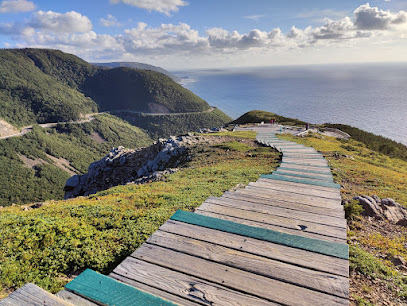
The Big Fiddle
Discover the vibrant spirit of Cape Breton through The Big Fiddle, an iconic symbol of music and culture in Sydney, Nova Scotia.
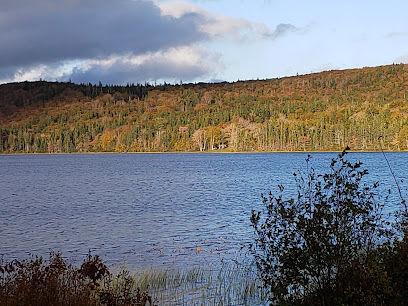
Skyline Trail
Experience breathtaking views and diverse wildlife at Skyline Trail, a must-visit mountain pass in Nova Scotia's stunning Cape Breton Highlands.
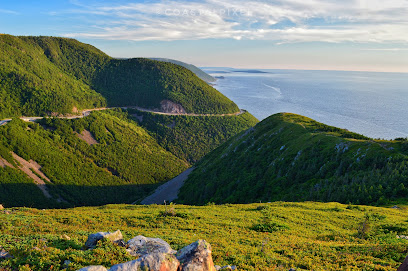
Lakies Head
Discover the breathtaking views and natural beauty of Lakies Head, a premier scenic spot on the stunning Cabot Trail in Nova Scotia.
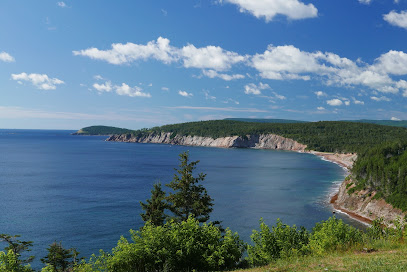
White Point Trailhead
Discover the breathtaking beauty of White Point Trailhead in Nova Scotia, where stunning landscapes and scenic trails await every adventurer.
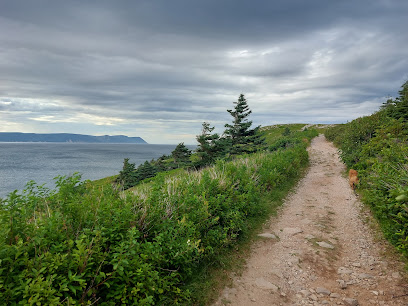
Uisge Bàn Falls Provincial Park
Explore the serene beauty of Uisge Bàn Falls Provincial Park, where stunning waterfalls meet lush landscapes in the heart of Nova Scotia.
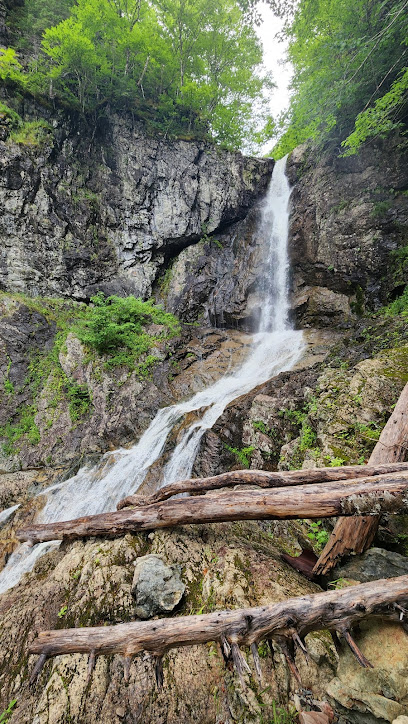
Cabots Landing Provincial Park
Experience the stunning landscapes and rich history at Cabots Landing Provincial Park, a serene retreat in Nova Scotia's breathtaking coastal scenery.
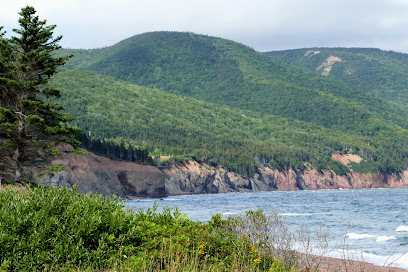
The Lone Shieling
Discover the rich Scottish heritage at The Lone Shieling, a historical landmark nestled in the breathtaking Cape Breton Highlands of Nova Scotia.
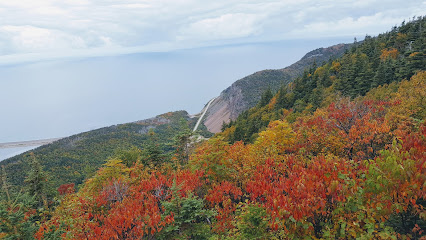
Bog Trailhead
Explore the breathtaking beauty of Bog Trailhead in Cape Breton, Nova Scotia, a must-visit hiking area for nature lovers and adventure seekers alike.
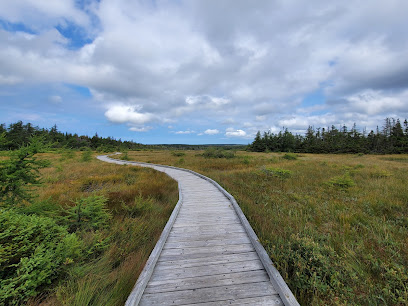
St. Peters Canal National Historic Site
Explore the historic St. Peters Canal National Historic Site in Nova Scotia, where maritime heritage meets stunning landscapes and outdoor adventures.

Marconi National Historic Site
Explore the Marconi National Historic Site in Glace Bay, NS, and journey through the history of wireless communication and its transformative impact.
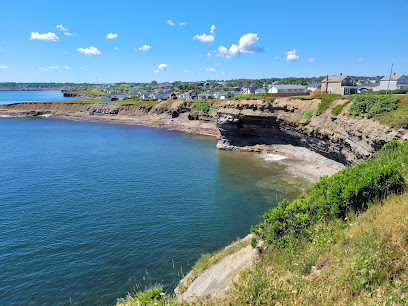
Cabot Trail
Experience the breathtaking beauty of the Cabot Trail in Nova Scotia, a must-see scenic route filled with adventure, culture, and stunning landscapes.
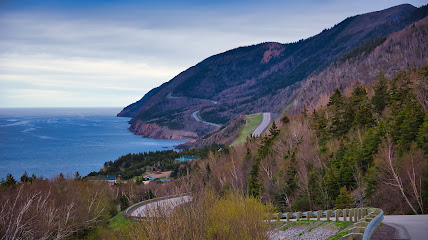
Acadian Trailhead
Discover the stunning beauty and rich cultural heritage of the Acadian Trailhead in Cape Breton Highlands, a premier hiking destination in Nova Scotia.
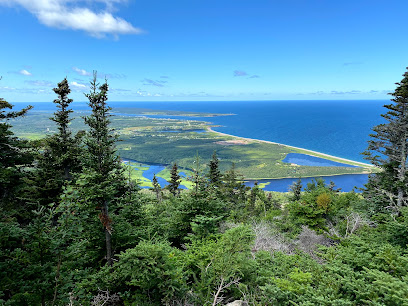
Skyline Trail Cape Breton Highland National Park
Discover the natural beauty of Cape Breton Highlands National Park at Skyline Trail, offering stunning ocean views and diverse wildlife.
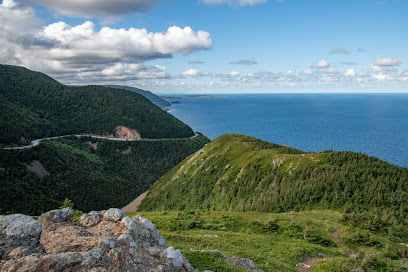
St. Ann's Provincial Park
Experience the natural beauty and tranquility of St. Ann's Provincial Park, a must-visit destination for outdoor enthusiasts in Nova Scotia.
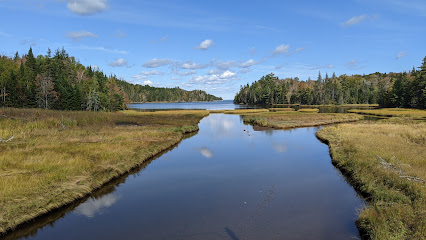
Unmissable attractions to see
The Big Fiddle
Discover the Big Fiddle, a towering tribute to Cape Breton's musical legacy, set against the stunning backdrop of Sydney's waterfront.
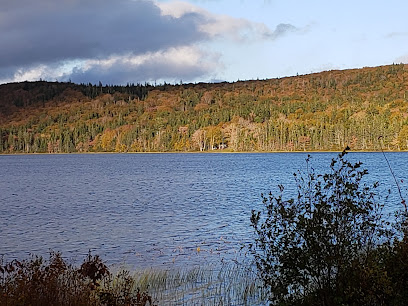
Lakies Head
Experience the stunning vistas and natural beauty of Lakies Head, a scenic gem along Nova Scotia's iconic Cabot Trail in Cape Breton Highlands National Park.
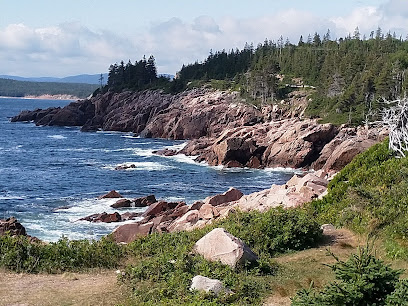
Pathend Brook Lookout
Experience unparalleled natural beauty at Pathend Brook Lookout, a hidden gem in Nova Scotia, perfect for nature lovers and photography enthusiasts.
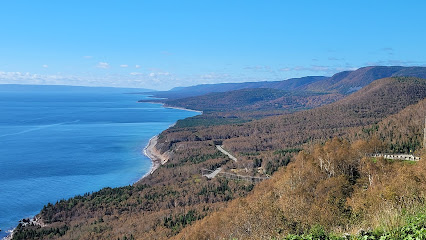
Essential places to dine
Rusty Anchor Restaurant
Experience fresh seafood and stunning views at Rusty Anchor Restaurant on Nova Scotia's scenic Cabot Trail.
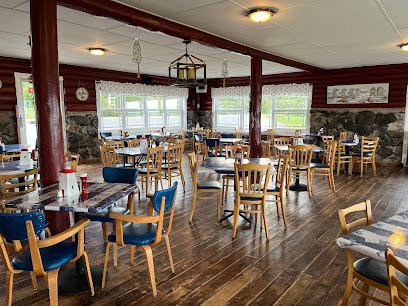
Dancing Goat Cafe & Bakery
Discover culinary bliss at Dancing Goat Cafe & Bakery in Margaree Valley—where fresh ingredients meet delightful pastries in a cozy setting.
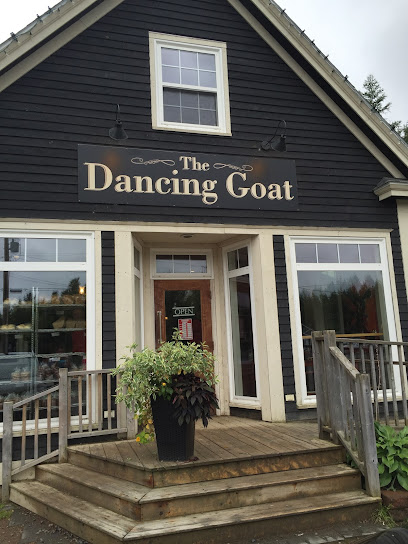
Coastal Restaurant & Pub
Discover Coastal Restaurant & Pub: A delightful blend of seafood and burgers with stunning ocean views along Nova Scotia's scenic Cabot Trail.
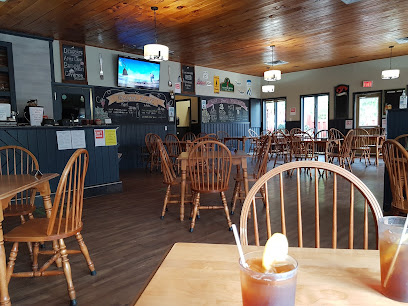
Le Gabriel Restaurant & Lounge
Discover authentic Nova Scotian flavors at Le Gabriel Restaurant & Lounge in Chéticamp - where fresh seafood meets warm hospitality.
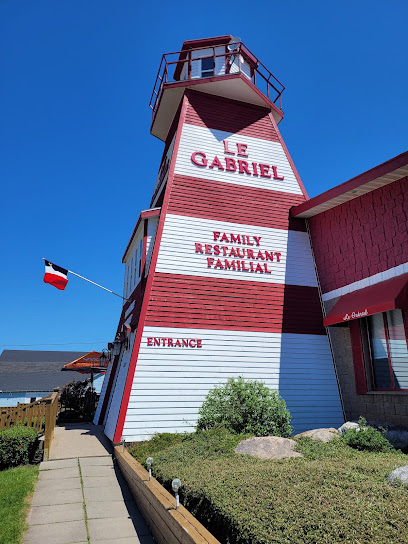
The Red Shoe
Discover authentic Cape Breton charm at The Red Shoe Pub in Mabou—where great food meets vibrant local culture.
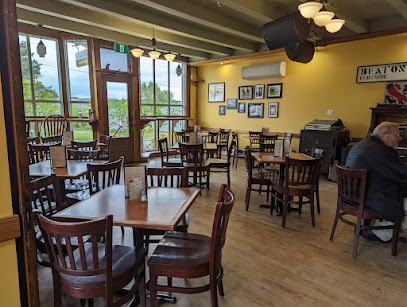
Clucking Hen Cafe & Bakery ( Seasonal may- October)
Discover Clucking Hen Cafe & Bakery on Cabot Trail: A charming spot for fresh pastries and hearty meals amidst Cape Breton's stunning landscapes.
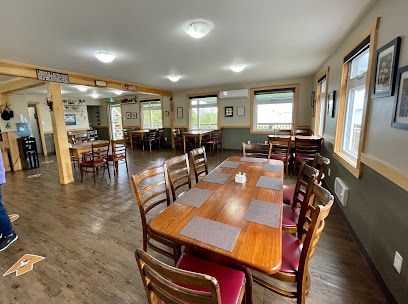
L'abri café, restaurant et bar
Experience authentic Cape Breton cuisine at L'abri Café in Chéticamp – where local flavors meet breathtaking coastal views.
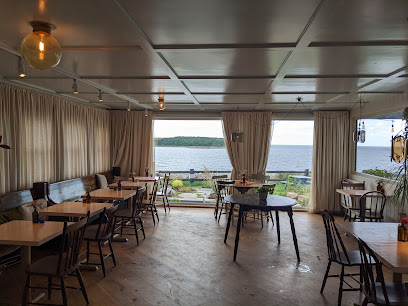
Main Street Restaurant
Experience exquisite dining at Main Street Restaurant in Ingonish Beach—where local flavors meet breathtaking views along Nova Scotia's iconic Cabot Trail.
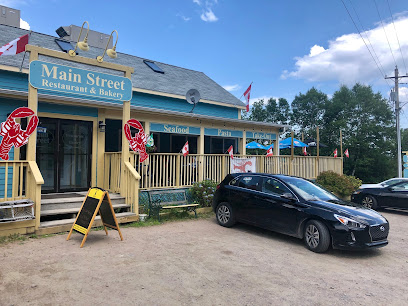
Harbour Restaurant and Bar
Experience exquisite seafood dining with breathtaking ocean views at Harbour Restaurant and Bar on Nova Scotia's Cabot Trail.
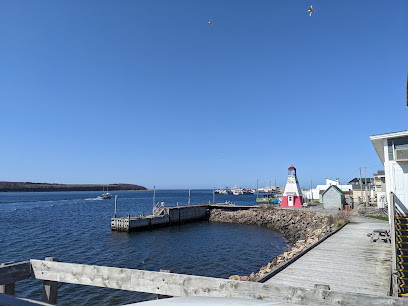
Seagull Restaurant
Experience fresh seafood and breathtaking views at Seagull Restaurant on Nova Scotia's scenic Cabot Trail.
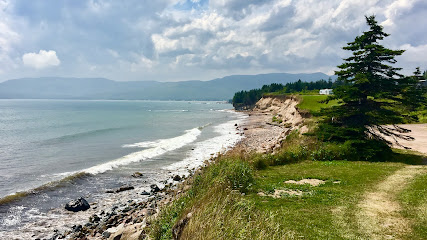
Chowder House
Experience the best seafood dining in Neils Harbour at Chowder House—where every dish showcases the rich flavors of Nova Scotia's coast.
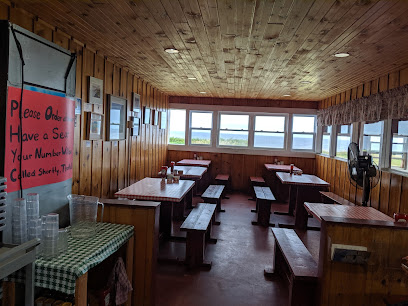
Cedar House Bakery & Restaurant
Experience authentic Canadian flavors at Cedar House Bakery & Restaurant in Boularderie East—home to the best scones on Cape Breton Island.
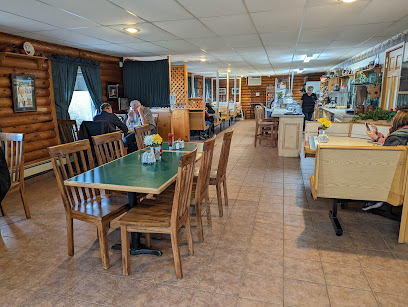
Lobster Galley
Discover Lobster Galley: your go-to destination for fresh seafood delights along Nova Scotia's breathtaking Cabot Trail.
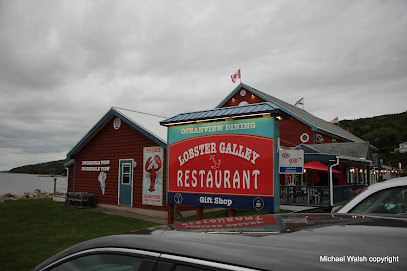
Belle View Restaurant Ltd
Experience authentic Nova Scotian cuisine with breathtaking views at Belle View Restaurant Ltd along the iconic Cabot Trail.
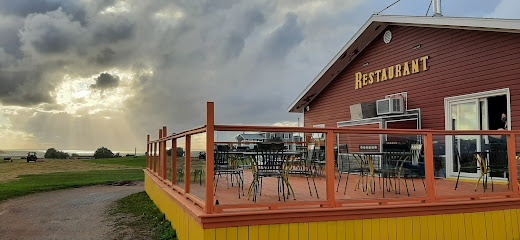
Morrison's Restaurant
Discover delicious seafood and local cuisine at Morrison's Restaurant on the scenic Cabot Trail in Cape North, Nova Scotia.

Markets, malls and hidden boutiques
The Big Fiddle
Explore the Big Fiddle in Sydney, Nova Scotia - a stunning tribute to Cape Breton's musical heritage and a vibrant waterfront experience.
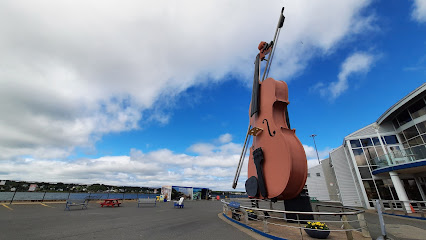
Cape Breton Farmer's Market & General Store
Explore Cape Breton Farmer's Market & General Store for fresh produce, handcrafted goods, and a taste of local culture in Sydney, Nova Scotia.

Flora's Cabot Trail
Discover the sweet taste of Nova Scotia at Flora's Cabot Trail, your go-to ice cream shop along the scenic Cabot Trail.
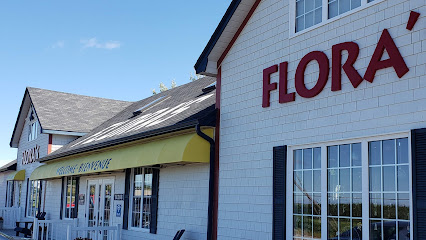
Cabot Trail Food Market Ltd
Explore the essence of Nova Scotia at Cabot Trail Food Market Ltd, your go-to stop for local groceries and unique regional flavors.
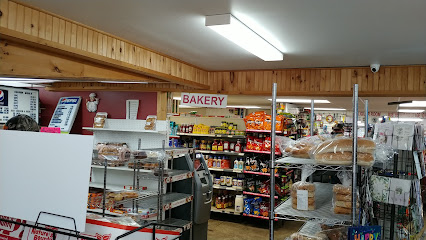
Tartans and Treasures
Explore Tartans and Treasures in Dingwall, Nova Scotia - a unique store offering authentic Scottish goods and local crafts along the scenic Cabot Trail.
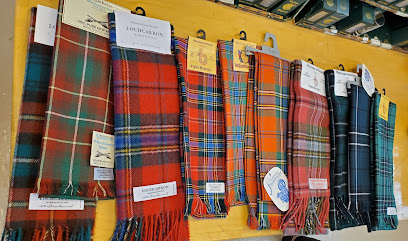
Marguerite boutique et provisions
Explore Marguerite Boutique et Provisions for a unique blend of local groceries, vintage finds, and a cozy café experience in Chéticamp.
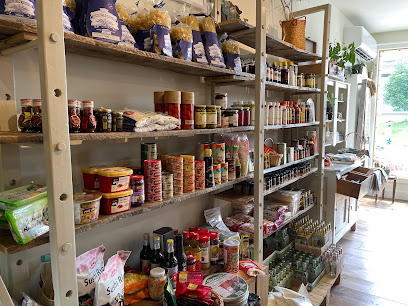
Cardinal Points Gift Shop
Explore the beauty of Nova Scotia at Cardinal Points Gift Shop, your go-to destination for unique souvenirs and local treasures along the Cabot Trail.

Best Of Cape Breton Gift Shop
Explore a treasure trove of locally crafted gifts and souvenirs that embody the spirit of Cape Breton Island at Best Of Cape Breton Gift Shop.
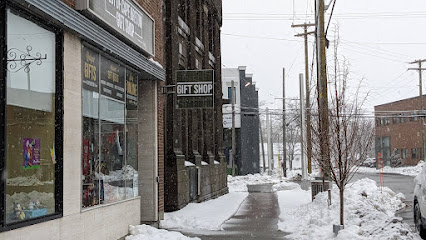
The Bargain! Shop
Explore The Bargain! Shop in Petit Étang for unique local products, great deals, and a welcoming shopping experience in Nova Scotia.
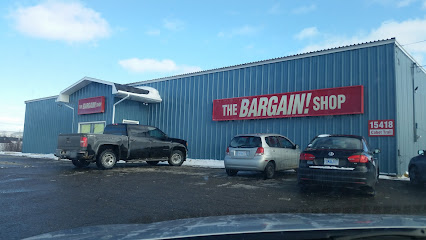
Cape Breton Curiosity Shop
Explore the charm of Cape Breton Curiosity Shop, where unique gifts and local artisan crafts await to create lasting memories from your visit to Nova Scotia.
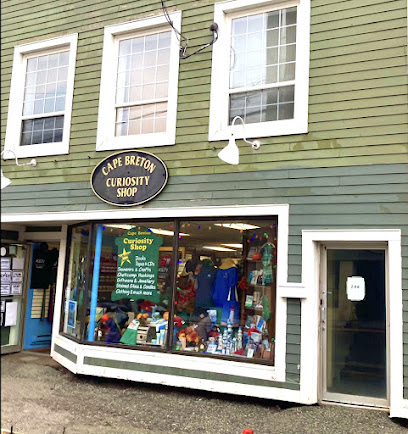
Wildfire Pottery
Explore the beauty of handcrafted ceramics at Wildfire Pottery, a unique store along the scenic Cabot Trail in Nova Scotia.

Get Nauti
Discover unique gifts and souvenirs at Get Nauti, the premier gift shop in Sydney, Nova Scotia, celebrating local artisans and maritime culture.
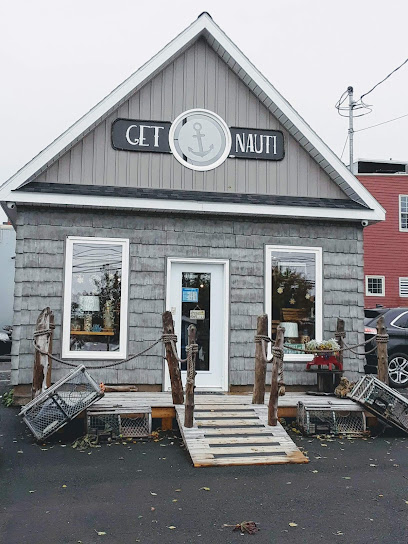
Margaree Harbour Craft & Gift Shop
Explore the charm of Margaree Harbour Craft & Gift Shop, where local artistry meets the stunning scenery of Nova Scotia's Cabot Trail.
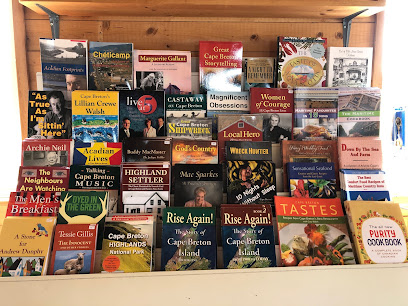
Myles From Nowhere
Explore the charming Myles From Nowhere in Nova Scotia, where antiques and unique treasures await along the picturesque Cabot Trail.
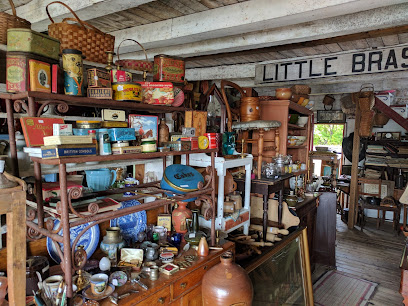
Quincy Street Market
Discover unique clothing and local artistry at Quincy Street Market in Inverness, a must-visit destination for an authentic Nova Scotia experience.
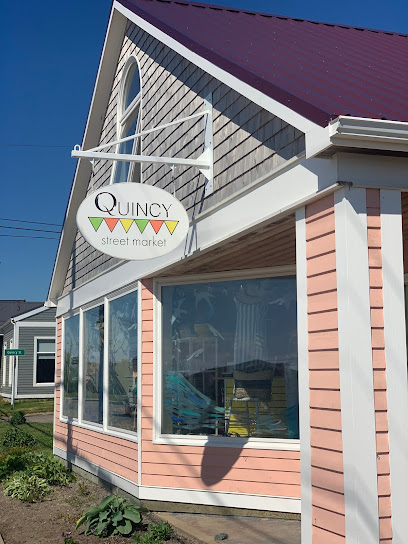
Essential bars & hidden hideouts
Cape Breton Highlands National Park
Explore the breathtaking landscapes and rich culture of Cape Breton Highlands National Park, a must-visit destination in Nova Scotia.
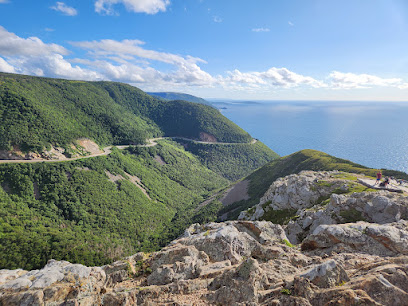
Governors Pub & Eatery
Experience the charm of Governors Pub & Eatery, where European flavors meet Irish hospitality in the heart of Sydney, Nova Scotia.
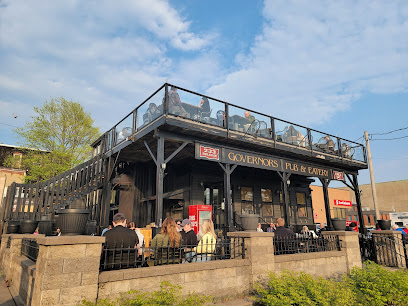
The Old Triangle Irish Alehouse
Experience the warmth of Ireland at The Old Triangle Irish Alehouse, where traditional flavors meet lively entertainment in Sydney, Nova Scotia.
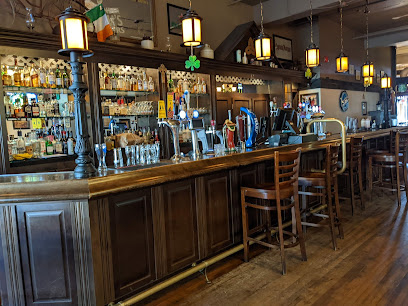
Coastal Restaurant & Pub
Experience mouth-watering seafood and burgers at Coastal Restaurant & Pub, set against the stunning backdrop of Nova Scotia's Cabot Trail.
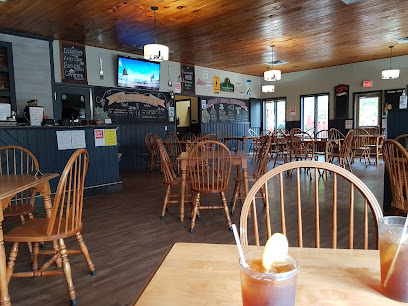
Glenora Inn & Distillery
Discover the charm of Glenora Inn & Distillery, where heritage whisky meets stunning landscapes in the heart of Nova Scotia.
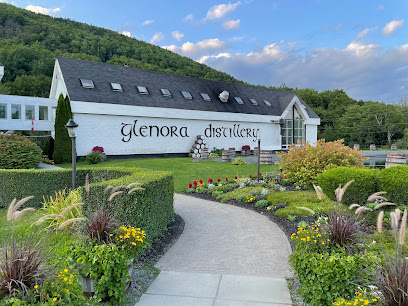
The Doryman Pub and Grill
Experience the flavors of Nova Scotia at The Doryman Pub and Grill, where fresh seafood meets a warm, inviting atmosphere.

Main Street Restaurant
Discover the culinary delights of Main Street Restaurant in Ingonish Beach, where local flavors and breathtaking views create an unforgettable dining experience.

Harbour Restaurant and Bar
Experience the best of Nova Scotia's seafood at Harbour Restaurant and Bar, where stunning ocean views meet culinary excellence.

Island Folk Cider House
Experience the refreshing taste of handcrafted ciders at Island Folk Cider House, Sydney's premier cider bar and snack destination.
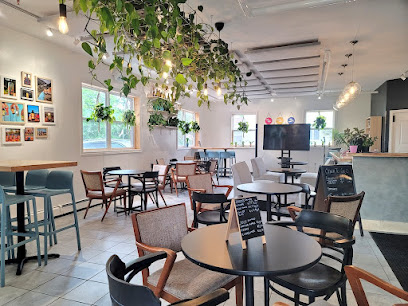
Groundswell Pub & Inn
Discover the heart of Cape Breton at Groundswell Pub & Inn, where local flavors and outdoor adventures await in D'Escousse.

The Crown Cafe & Bar
Discover The Crown Cafe & Bar, where delicious cuisine meets stunning waterfront views in the heart of Sydney, Nova Scotia.
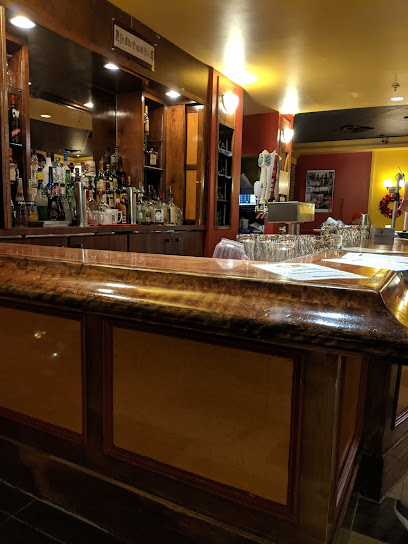
Angies Family Restaurant & Pizza
Discover a taste of Cape Breton at Angie's Family Restaurant & Pizza, where local flavors and friendly service meet along the scenic Cabot Trail.
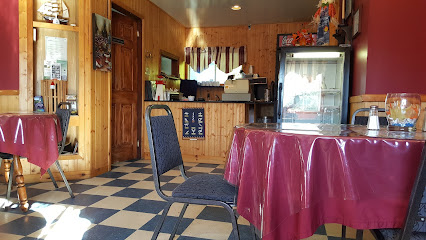
The Annex
Experience the flavors of Nova Scotia at The Annex, a cozy restaurant in Inverness serving locally sourced dishes in a welcoming atmosphere.
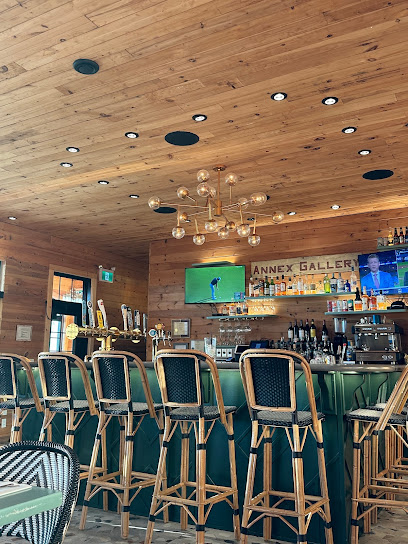
Castle Rock Country Inn
Discover the perfect blend of comfort and culinary delight at Castle Rock Country Inn on the iconic Cabot Trail.

Whit's Public House
Experience the rich flavors of Cape Breton at Whit's Public House, a cozy restaurant in Inverness offering local cuisine and a friendly atmosphere.
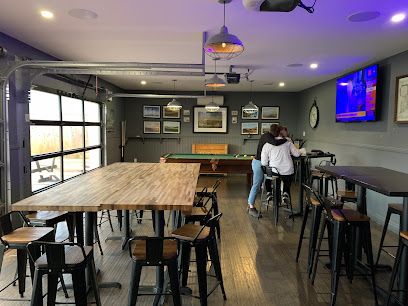
Local Phrases about Cape Breton Highlands National Park
-
- HelloCiamar a tha thu
[kya-mar a ha oo] - GoodbyeMar sin leat
[mar shin lat] - YesTha
[ha] - NoChan eil
[khan yel] - Please/You're welcomeMa 'se do thoil
[ma shuh doh ho-il] - Thank youTapadh leat
[ta-pa lay-at] - Excuse me/SorryFuirich
[foo-rich] - How are you?Ciamar a tha thu?
[kya-mar a ha oo] - Fine. And you?Tha gu math. Agus thu?
[ha goo mah. agus hoo] - Do you speak English?A bheil Gàidhlig agad?
[a vel gah-lik a-gad] - I don't understandChan eil mi 'tuigsinn
[khan yel mee too-ik-shin]
- HelloCiamar a tha thu
-
- I'd like to see the menu, pleaseBu toil leam an meniu fhaicinn, ma 'se do thoil
[boo tall lum an men-yoo a-kin, ma shuh doh ho-il] - I don't eat meatChan eil mi a' ithe feòil
[khan yel mee a ee-ha fuh-il] - Cheers!Slàinte!
[slaant-uh] - I would like to pay, pleaseBu toil leam pàighinn, ma 'se do thoil
[boo tall lum pa-ee-neen, ma shuh doh ho-il]
- I'd like to see the menu, pleaseBu toil leam an meniu fhaicinn, ma 'se do thoil
-
- Help!Cuideachadh!
[kwi-jach-uh] - Go away!Falbh air falbh!
[fal-uh air fal-uh] - Call the Police!Cuirt air a' phoileas!
[koort air a fwal-iss] - Call a doctor!Cuirt air lighiche!
[koort air lee-ghich-uh] - I'm lostTha mi air chall
[ha mee er khall] - I'm illTha mi tinn
[ha mee teen]
- Help!Cuideachadh!
-
- I'd like to buy...Bu toil leam a cheannach...
[boo tall lum a hya-nach] - I'm just lookingTha mi a' coimhead
[ha mee a coo-ee-met] - How much is it?Deagh mhath e?
[jyak vah eh] - That's too expensiveTha sin ro dhoirbh
[ha shin ro door-iv] - Can you lower the price?An urrainn dhut an t-sluaigh a lùb
[an oor-an ghoot an sloo-ee a loo-buh]
- I'd like to buy...Bu toil leam a cheannach...
-
- What time is it?Dè an t-àm?
[jay an tahm] - It's one o'clockTha e aon uair
[ha eh ayn oo-ir] - Half past (10)Leath uair as deich
[lay-ah oo-ir as jech] - MorningMadainn
[mah-din] - AfternoonFeasgar
[fes-gar] - EveningFosgladh
[fos-glav] - YesterdayAn-dè
[an-jay] - TodayAn-diugh
[an-joo] - TomorrowA-màireach
[ah-mar-ech] - 1Aon
[ayn] - 2Dà
[da] - 3Trì
[tree] - 4Ceithir
[keh-er] - 5Còig
[koh-ik] - 6Sia
[shee-uh] - 7Seachd
[shachk] - 8Ochd
[ochk] - 9Naoidh
[nee] - 10Deich
[jech]
- What time is it?Dè an t-àm?
-
- Where's a/the...?Càite a bheil a'...
[ka-cha vel a] - What's the address?Dè an seòladh?
[jay an shoh-luh] - Can you show me (on the map)?An urrainn dhut sealladh orm (air a' mhapa)?
[an oor-an ghoot shal-uh orm (er a vah-puh)] - When's the next (bus)?Cuin a thig an ath (bus)?
[kwin a hig an ah (bus)] - A ticket (to ....)Ticead (gu ....)
[tee-ket (goo)]
- Where's a/the...?Càite a bheil a'...
History of Cape Breton Highlands National Park
-
Before the arrival of European settlers, the region now known as Cape Breton Highlands National Park was inhabited by the Mi'kmaq people. The Mi'kmaq have lived in the area for thousands of years, relying on the rich natural resources for fishing, hunting, and gathering. Their deep spiritual connection to the land is evident in their stories, oral traditions, and use of natural landmarks for navigation and sacred ceremonies.
-
The first Europeans to explore the Cape Breton Highlands were likely the Norse, followed by Basque fishermen in the 16th century. However, it was the French who established a more permanent presence in the 17th century with the founding of Fortress of Louisbourg. French settlers and Acadians began to explore the highlands for timber and hunting grounds, leading to conflicts and eventual displacement by British forces in the 18th century.
-
In the early 19th century, Cape Breton Island saw an influx of Scottish and Irish immigrants. These settlers brought with them a rich cultural heritage, including music, dance, and Gaelic language, which still influence the region today. The rugged landscape of the highlands reminded many of their homeland, contributing to a strong sense of community and identity among the settlers.
-
Cape Breton Highlands National Park was established in 1936, becoming one of Canada’s first national parks. The park was created to protect the unique landscape of the highlands and to provide a space for public enjoyment and recreation. Initial development included the construction of roads, trails, and facilities to accommodate visitors, with a focus on preserving the natural environment.
-
The Cabot Trail, which winds through Cape Breton Highlands National Park, was completed in 1932, before the park's official designation. Named after the explorer John Cabot, the trail offers breathtaking views of the highlands and the Atlantic Ocean. Its construction was a significant engineering feat of the time and has since become one of the most iconic scenic routes in North America, attracting visitors from around the world.
-
Since its establishment, Cape Breton Highlands National Park has been a focal point for conservation efforts. Initiatives to protect endangered species, such as the American marten and the Canada lynx, have been undertaken within the park. Additionally, efforts to restore natural habitats, combat invasive species, and promote sustainable tourism practices are ongoing, ensuring the preservation of the park's diverse ecosystems.
-
Cape Breton Highlands National Park is not only a natural treasure but also a cultural hub. The park hosts a variety of festivals and events throughout the year, celebrating the region's rich history and cultural diversity. Events like the Celtic Colours International Festival highlight the music, dance, and traditions of the Scottish and Irish settlers, while other events focus on Mi'kmaq culture, storytelling, and art, offering visitors a deep dive into the area's cultural tapestry.
Cape Breton Highlands National Park Essentials
-
Cape Breton Highlands National Park is located on Cape Breton Island in Nova Scotia, Canada. The nearest major airport is the Sydney/J.A. Douglas McCurdy Airport, approximately 2 hours away by car. From there, you can rent a car or take a shuttle service to the park. Alternatively, you can fly into Halifax Stanfield International Airport and drive approximately 4 hours to reach the park. For those traveling by car from the mainland, the Trans-Canada Highway (Highway 105) connects to Cape Breton Island via the Canso Causeway.
-
Once in Cape Breton Highlands National Park, the best way to get around is by car. The Cabot Trail, a scenic highway that loops around the park, provides access to many of the park's attractions and hiking trails. Cycling is also popular, especially along the Cabot Trail. Within the park, there are no public transportation options, so renting a vehicle is highly recommended for flexibility and convenience.
-
The official currency in Canada is the Canadian Dollar (CAD). Credit and debit cards are widely accepted throughout Cape Breton Island, including within the national park. However, it is advisable to carry some cash for smaller establishments, local markets, and entry fees at some attractions. ATMs are available in nearby towns such as Cheticamp and Ingonish.
-
Cape Breton Highlands National Park is generally a safe destination for tourists. However, it is always wise to take standard precautions. Avoid leaving valuables in your vehicle and be cautious when hiking or exploring remote areas. There are no specific high-crime areas targeting tourists within the park, but always be aware of your surroundings and follow park regulations.
-
In case of an emergency, dial 911 for immediate assistance. The park has ranger stations and visitor centers where you can seek help. It is recommended to have travel insurance that covers medical emergencies and outdoor activities. For minor health issues, there are medical facilities and pharmacies in nearby towns such as Cheticamp and Ingonish. Familiarize yourself with the locations of the nearest hospitals, which are in Baddeck and Sydney.
-
Fashion: Do wear comfortable, weather-appropriate clothing and sturdy hiking shoes. Layers are advisable due to variable weather conditions. Don't wear overly revealing clothing, especially in more conservative local communities. Religion: Do be respectful when visiting local churches or cultural sites. Public Transport: Do note that there is no public transport within the park; plan accordingly. Greetings: Do greet locals with a friendly 'hello' or 'hi'. Canadians are generally polite and friendly. Eating & Drinking: Do try local seafood and traditional Acadian dishes. Don't forget to try the famous local lobster and chowder. Do not litter, and always clean up after yourself in the park.
-
To experience Cape Breton Highlands National Park like a local, consider visiting during the shoulder seasons (late spring and early fall) to avoid the summer tourist crowds. Engage with locals in nearby communities like Cheticamp and Ingonish to learn about Acadian and Gaelic culture. Attend local events and festivals, such as the Celtic Colours International Festival in October. Don't miss the Skyline Trail for some of the most breathtaking views in the park. Also, consider taking a whale-watching tour or visiting a local music venue to enjoy traditional Cape Breton fiddle music.
Trending Landmarks in Cape Breton Highlands National Park
-
Skyline Trailhead
-
The Big Fiddle
-
Skyline Trail
-
Lakies Head
-
White Point Trailhead
-
Uisge Bàn Falls Provincial Park
-
Cabots Landing Provincial Park
-
The Lone Shieling
-
Bog Trailhead
-
St. Peters Canal National Historic Site
-
Marconi National Historic Site
-
Cabot Trail
-
Acadian Trailhead
-
Skyline Trail Cape Breton Highland National Park
-
St. Ann's Provincial Park
Nearby Cities to Cape Breton Highlands National Park
-
Things To Do in Miquelon
-
Things To Do in Langlade
-
Things To Do in Saint-Pierre Airport
-
Things To Do in Saint-Pierre Ferry Terminal
-
Things To Do in Bar Harbor
-
Things To Do in Acadia National Park
-
Things To Do in Bangor
-
Things To Do in Camden
-
Things To Do in Rockland
-
Things To Do in Waterville
-
Things To Do in Augusta
-
Things To Do in Brunswick
-
Things To Do in Lewiston
-
Things To Do in Quebec City
-
Things To Do in South Portland


